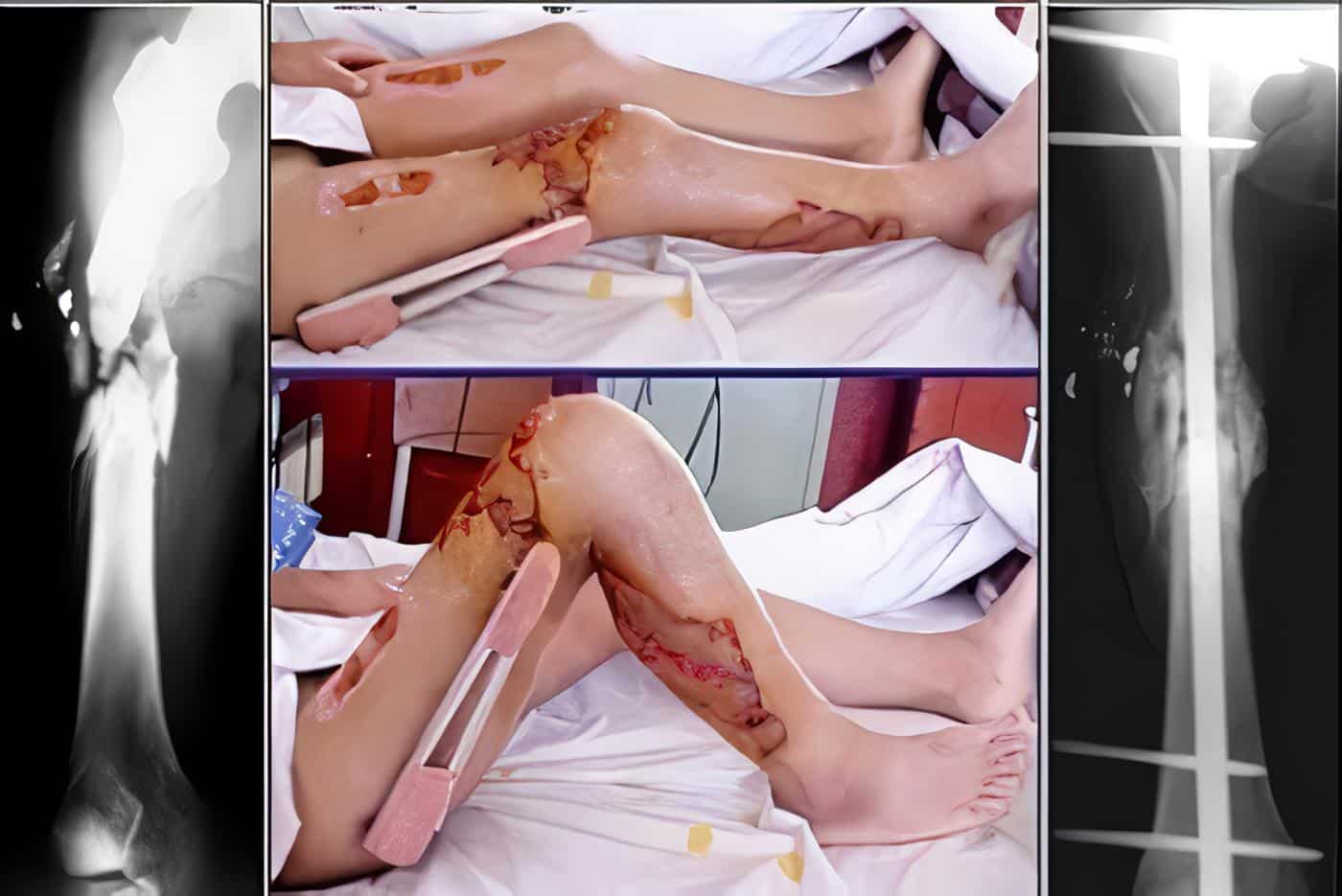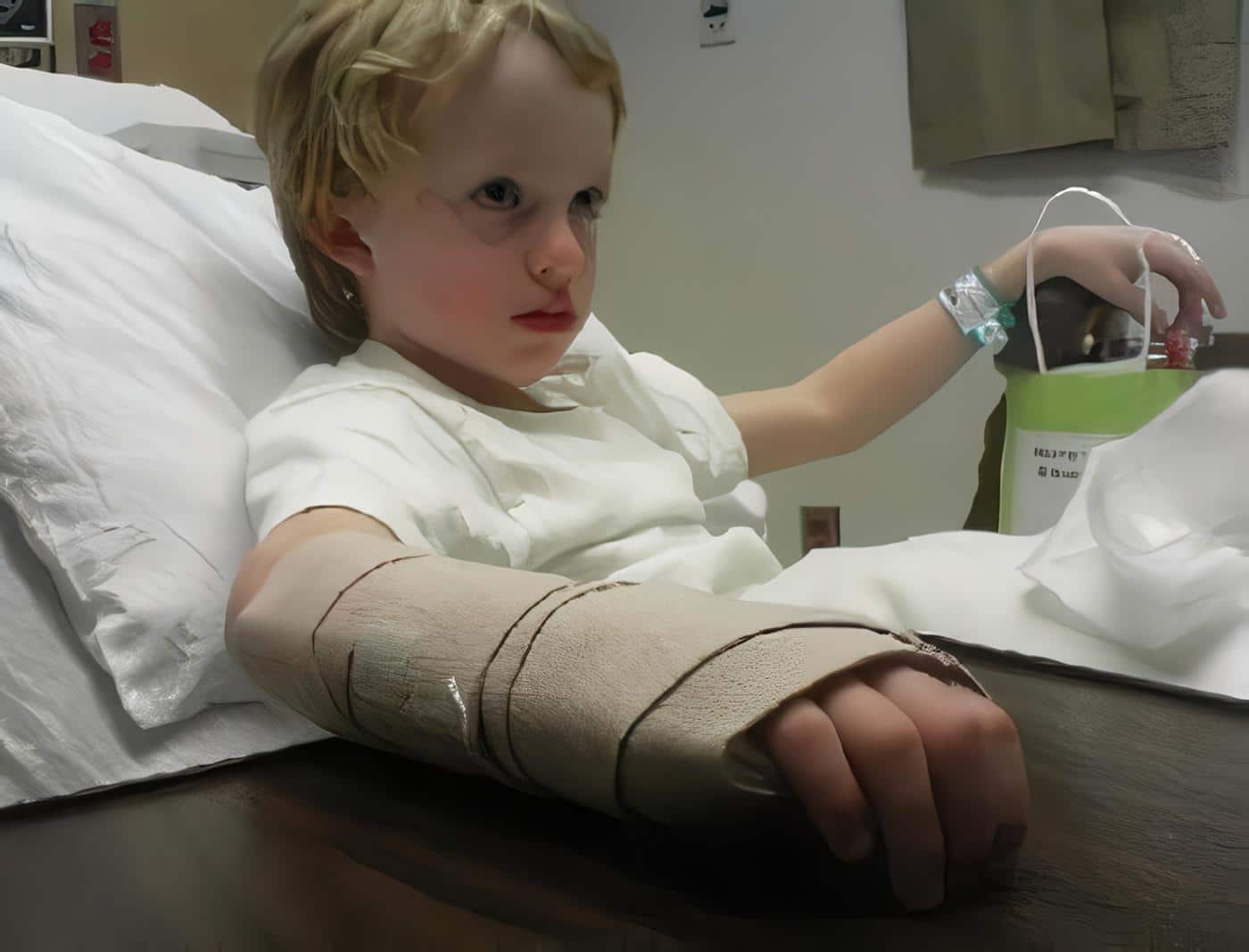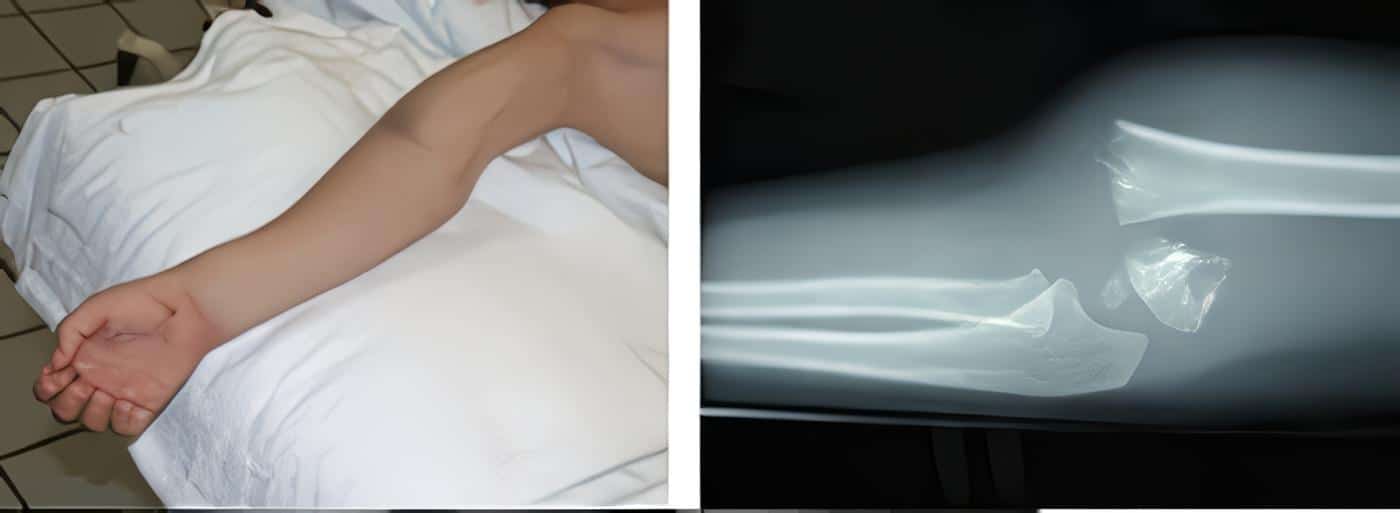El estudio es claro en determinar una mayor incidencia de DSR en pacientes tratados con reducción cerrada y fijación percutánea, de tal manera que un paciente con fractura del extremo distal del radio y DSR tiene una posibilidad 2.7 veces mayor de haber sido tratado con RC y FP que el grupo de pacientes sin distrofia.
No podemos afirmar que el grado de agresividad en el tratamiento se asocie con una mayor incidencia de DSR, pues con manejos como RA y osteo-síntesis no se presenta una mayor incidencia.
Este trabajo coincide con la literatura mundial que reporta una mayor incidencia de DSR, independientemente de la causa, en el sexo femenino. Para fracturas del extremo distal del radio, en nuestro caso, hubo una relación 6:1, lo cual fue estadísticamente significativo. También coincide con los resultados de incidencia de DSR con respecto a laedad.
Obtuvimos un promedio de edad 10 años mayor en los pacientes con fracturas del extremo distal del radio y DSR contra los del grupo control; los pacientes que desarrollan DSR en el tratamiento de su fractura, tienen una posibilidad 4.8 veces mayor de ser mayores de 50 años que los que no la desarrollan.
Llama la atención que las características de sexo y edad son compartidas por dos enfermedades similares, como lo son el síndrome de hombro congelado y la DSR.
Hubo una distribución comparable en la clasificación de las fracturas, y en la causa del trauma en ambos grupos, lo cual hace suponer que la magnitud del trauma no predispone a una mayor incidencia de DSR.
Igualmente no hubo diferencia significativa al tener en cuenta otras variables que inicialmente consideramos pudieran tener una mayor asociación a la aparición de DSR, como lo son: el tipo de anestesia, particularmente la anestesia regional, y el síndrome de túnel del carpo, pensando que al producir una manipulación del plexo braquial en el primer caso y lesión del nervio mediano en el segundo, se predispone a una mayor incidencia de DSR.
Al revisar los casos de DSR, se encontró que los esquemas de tratamiento fueron variados, pero incompletos e irregulares, faltando una valoración integral por un servicio de clínica de dolor, el cual se encuentra funcionando actualmente pero no durante el período analizado.
A pesar de estas condiciones, hubo mejoría en la mayoría de los pacientes pero a costa de un tratamiento prolongado, que seguramente habría sido menor, permitiéndole a los pacientes un reintegro a su actividad normal más temprano, si se hubiese contado con las condiciones para un manejo adecuado. Actualmente se está utilizando el bloqueo simpático, por ser la mejor arma terapéutica en el momento.
Debido a la naturaleza retrospectiva de nuestro estudio, que le genera imprecisión en el control de las variables, y al posible sesgo por no ser un experimento clínico controlado, se encuentra en curso un trabajo prospectivo para determinar el riesgo relativo directo de los factores de riesgo ya esclarecidos (como lo son el tipo de tratamiento, edad, sexo), y definir el curso de la DSR y su impacto en el resultado final (funcional y anatómico).
Bibliografía
1. Abbaszadegan H., Adolphson P. Bone mineral loss afterColles, fracture. Plaster case and external fixation equivalent. Acta-Orthop-Scand 1991.62: 156-158.
2. Ahn S., Moore W., Thoracospic cervicodorsal sympathectomy: preliminary results. Journal- vascSurg 1994. 20:511-519.
3. Amadio P., Mackinnon S., Reflex sympathetic dystrophy syndrome: Consensus report of ad Hoc committee of the AAHS on the definition of RSD Syindrome. Plastic and reconstructive surgery 1991. 87: 371-375.
4. Aro H.,Koivunen T., Minor axial shortenining of the radius affects autcome of colles´fracture treatment.J-Hand-Surg- Am 1991.16:392-398
5. Arriagada M., X-Ray bone densitometry in the diagnosis and follow-up of RSD Syndrome. J-Rheumatol 1994. 21: 498-500.
6. Bickerstaff D., Radiographic changes in algodystrophy of the hand. J-Hand -Surg-Br 1991. 16: 47-52.
7. Borrero F., Traumatología de la mano. Santa Fe de Bogotá. Empresa editorial de Cundinamarca 1996.
8. Browner B.,JupiterJ.,. Skeletal Trauna. Philadelphia. W. B. Saunders: 1992.
9. Chelimsky T., Value of automatic testing in RSD. MayoClin-Proc 1995. 70: 1029-1040.
10. Demangeat J. Three phase bone scanning in RSD of the han. J-Nucl-Med 1998. 29: 26-32.
11. Dielissen P. Amputation for RSD. Journal of Bone and Joint Surgery 1995.77B: 270-273.
12. Field J., Features of de Algodystropy 10 years after colles´fracture. J- Hand- Surg- Br 1992. 17: 318-320.
13. Field J., Effects of Guanethidine on the natural history of post- traumatic algodystrophy. Annals of Rheumatologic Diseases 1993. 52: 467-469.
14. Field J., Objective improvements in algodystrophy following regional intravenous guanethidine. J-Hand-Surg-Br 1993. 18: 339-342.
15. Field J., Algodystrophy after Colles´ fracture is associated with secondary tightness of cast. J. B.J. S. 1994. 76B: 901-905
16. Geertzn J., RSD: early treatment and psychological aspects. Arch-Phys-Med-Rehab 1994. 75:442-446.
17. Glynn C. Morphin injected around the stellate ganglion does not modulate the sympathetic nervous system nor does it provide pain relief. Pain 1993. 53: 33-37.
18. Goldie B, Powell J. Bony transfixion of the median nerve following Colles´fracture. Clin orthopaedics and Related Research 1991. 273: 275-277.
19.González JC. Diseños Básicos en investigación clínica. Revista Colombiana de Ortopedia y Traumatología 1996. 10: 89-99.
20. Herrick A. Abnormal thermoregulatory responses in patiets with RSD Syndrome. Journal of Rheumatology 1994. 21: 1319-1324.
21. Hoffman J. Effects of sympathetic block demostrate by triple phase bone scan. J-Hand-Surg-Am 1993. 18: 860-864.
22. Hove L.M. Prediction of secondary displacement in colles´fracture. Hand -Surg-Br 1994. 19: 731-736.
23. Hove L.M. Nerve entrapment and RSD after fracture of the distal radius.Scand-J-Plast-Surg-Hand 1995. 29: 53-58.
24. Kazuki K., Cineradiographic study of wrist motion after fracture of the distal radius. J-Hand-Surg-Am 1993. 18: 41-46.
25. King H., RSD treated by electroconvulsive therapy. Pain 1993. 55. 393-396.
26. Kline SC, Holder L.E., Segmental RSD: cinical and scintigraphic criteria. J-Hand- Surg- Am 1993.18: 853-859.
27. Kopylov P., Fractures of the distal end of the radius in young adults: thirty year follow-up. J-Hand-Surg -Br 1993. 18: 45-49.
28. kurvers H., Jacobs M., RSD: evolution of microcirculatory disturbances in time. Pain 1995. 60: 333-340.
29. Kwasny O., Openning Wedge osteotomy for malunion of the distal radius with neuropathy. Acta-Othop-Scand 1994.65: 207-208.
30. Larsen C., Epidemiology of the acute wrist trauma. Int-J-Epidemiol 1993. 22: 911-916.
31. Lee G., The role of bone scintigraphy in diagnosing RSD. J-Hand -Surg- Am 1995. 20: 458-463.
32. Loeser JD, Chapman C., The management of pain, John J. Bonica. Philadelphia: Leakfebiger, 1990.
33. Mallmin H., Colles´fracture associated with reduced bone mineral content. Photon densiometry. Acta-Orthop Scand 1992. 63: 552-554.
34. Mallmin H., Biochemical markers of bone metabolism in patiets with fracture of the distal forearm. Clin- Orthop-and- Rel-Res 1993. 295: 259-263.
35. Missakian M. Cooney W., Open reduction and internal fixation for distal radius fracture. J-Hand-Surg Am 1992. 17: 745-755.
36. Monsivais J., Baker J., The association of peripheral nerve compression and RSD. J-Hand-Surg-Br 1993. 18: 337-338.
37. Murray P, Floor K. Continuos axillary brachial plexus blockade for RSD. Anaesthesia 1995. 50: 633-635.
38. Na H. Abnormalites of mechanoreceptors in a rat model of neurapathic pain. J-Neurophysiology 1993.70: 552-558.
39. Ochoa J.Verdugo R. RSD, a common clinical avenue for somatoform expression. Neurology clinic. 1995. 13: 351-363.
40. O´Donoghue J., Three-phase bone scintigraphy. Asymptometric patterns in the upper extremities of asymptomatic and RSD patients. Clin-Nucl-Med 1993. 18: 829-836.
41. O´Neill T., Age and sex influences on fall characteristics. Ann-Rheum-Dis 1994. 53: 773-775.
42. Oyen W., RSD of the hand: an excessive inflammatory response. Pain 1993. 55: 151-157.
43. Pollock F., Patterns of microvascular response associated with RSD of the han. J-Hand-Srg-Am 1993, 18: 847-852.
44. Pritchett J., External fixation or closed medullary pinning for unstable Colles´ fracture. J. B. J. S. 1995. 77B: 267-269.
45. Ramamurthy S., Intravenous regional guanethidine in the treatment of RSD. Anesth-Analg 1995. 81: 718-723.
46. Rauck R. Epidural clonidine treatment for refractory RSD. Anesthesiology 1993.79: 1163-1169.
47. Robertson D., Video-assisted thoracic ganglionectomy. J-Neurosurgery 1993. 79: 238-240.
48. Roumen R., Unstable Colles´fracture in elderly patients J.B.J.S. 1991. 73B: 307-311.
49. Smuelsson H. Endoscopic electrocautery of the upper thoracic sympathetic chain: a safe and simple technique for treatment of RSD. Eur- J-Surg-Suppl 1994. 572: 55-57.
50. Schweitzer M. RSD revisited: MR. imagig findigs before and after infussion of contrast material. Radiology 1995. 195: 211-214.
51. Trumble T. Factors affecting functional outcome of displaced intraarticular distal radius fracture. J-Hand- Surg-Am 1994. 19: 325-340.
52. Tsukazaki T. Ulnar wrist pain after Colles´ fracture. Acta-Ortho-Scand 1993.64 : 462-464.
53.Tsukazaki T. Poor correlation between functional results and radiographic in Clles´fracture. J-Hand-Surg-Br 1993. 18: 588-591.
54.Tu E. Effect of surgical sympathectomy on arterial blood flow in RSD. Radiology 1994.191: 833-834.
55. Veldman P. Sings and symptoms of RSD: prospective study. Lncet 1993. 342: 1012-1016.
56. Wall P, Melzack R. Textbook of pain. London. Churchill Livingstone: 1994.
57. Warwick D. Function ten years after Colles´s fracture. Clinic Orthopaedics 1993.295: 270-274.






